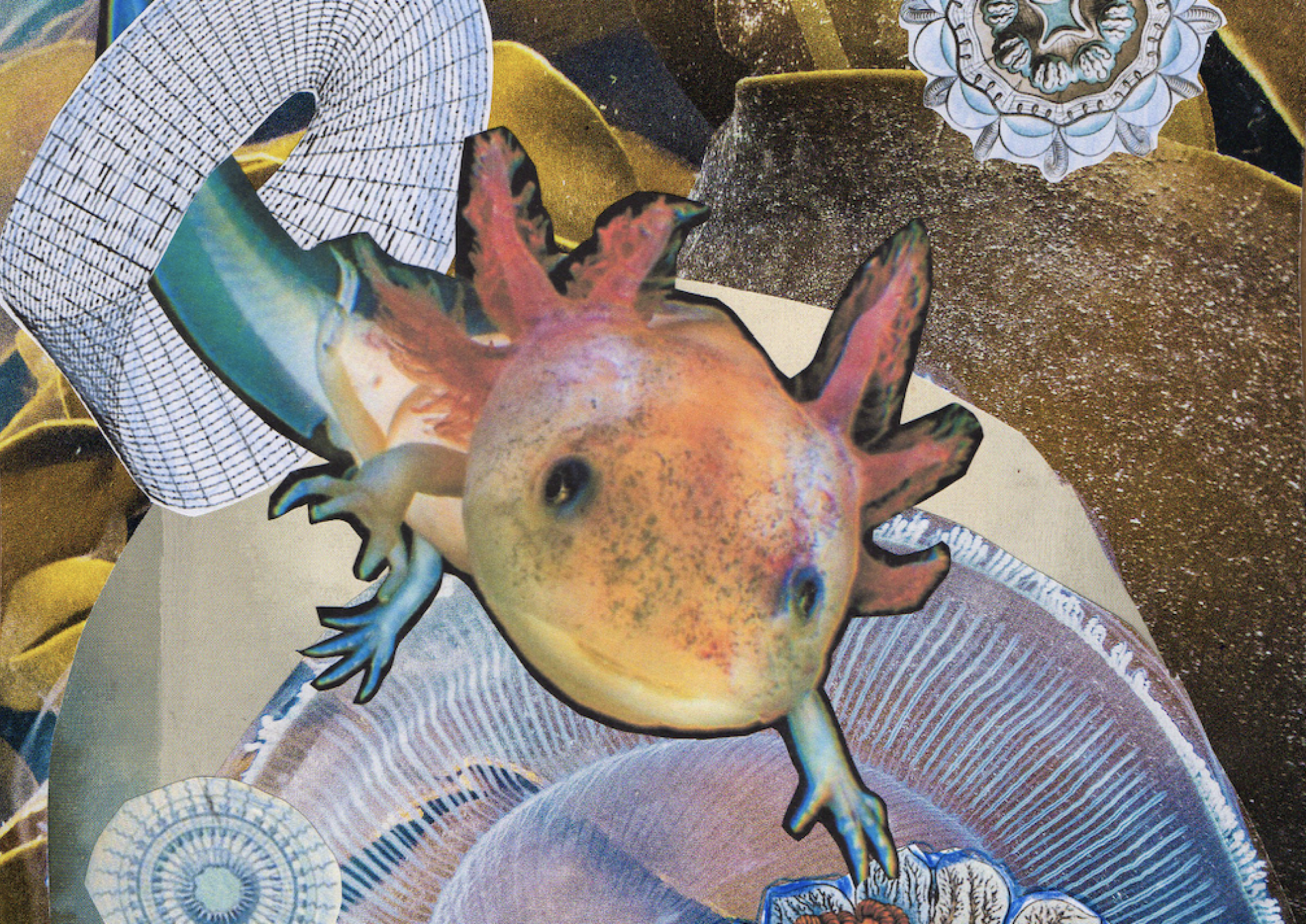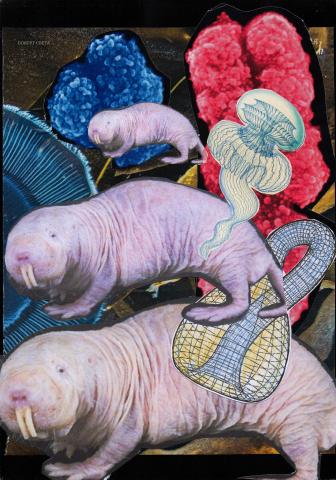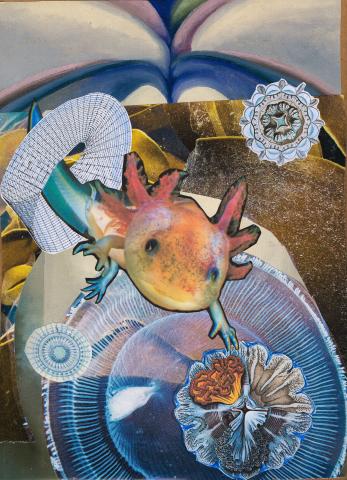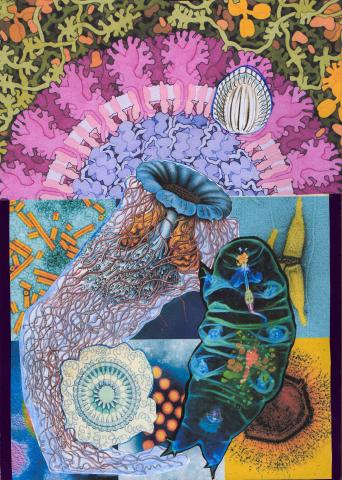A New Life Begins on Monday
translated from Russian by Samuel Goff and edited by the author
Mohira_Suyarkulova_cover

Doctor O had just delivered his report at a conference of the prestigious, west-coast Whitehall University. In his speech he had shared with confidence and humour the results of his revolutionary research in the field of regenerative biology. When the applause died down, one professor turned to another and O could make out the grey-haired don waxing lyrical about the report, and how “O’s work is so much better than his sister’s.”
Doctor O didn’t have a sister. In reality, the person this professor had in mind was O himself, the O of several years ago – the same person doing the same work. But this time O felt that his words were listened to, that he was taken seriously, that his body was not the subject of evaluative glances from his colleagues. His obsession with work, slightly sloppy appearance, dry sense of humour, and clumsiness were no longer perceived as flaws and inadequacies, but rather as charming personality traits.
It hadn’t always been this way. O had not been born a man; he had become one four years ago, in strange and mysterious circumstances.
* * *
O awoke in an unfamiliar place to the sound of an oak branch knocking against the window. It was raining, and the room O found themself in was gloomy and chilly. O tried to move their numb body and felt the ties at the back of their paper hospital gown scratch their skin. O stretched and got out of the bed, looking around decided that yes, this must be a hospital. But they felt wonderful – well-rested, bounding with energy and clearness of mind. Trying to remember why they had been hospitalised, O started inspecting their body. They checked their arms. They were sturdy as ever; the nails were cut short. Their legs were touchingly skinny as always. They threw off their hospital robe and approached the mirror on the wall above the sink. Standing in front of the mirror, naked, O carefully inspected their reflection – the same cornflower-blue eyes looked back, that dispassionate, slightly grumpy face framed with short dark hair. Their body had never been particularly curvaceous, rather dry and lean. And yet there could be no doubt. Had O become a man?!
It emerged later that O had ended up in hospital after running away from a party which was thrown to celebrate getting a research grant for a scientific project, and going missing. Worried, their colleague Sasha informed the police after O failed to come to work or respond to messages for three days. The police broke into O’s flat and found them in bed unconscious. Their breathing and heart rate were slow but their life seemed in no imminent danger. O came to on the eighth day – Monday – in their new, male form. Their metamorphosis was painless, total, and, apparently, irreversible.
Sasha was distractedly scrolling through her newsfeed in BestLook when she came across the headline “Freak-Mayhem: How Spontaneous Human Regeneration Syndrome is Threatening Human Rights.” She clicked on the link and continued reading: “There is no doubt that genetic factors have a defining influence on human identity, whether in terms of gender, sexuality, race, or health. These qualities are set in place in the intrauterine stage of development. Unfortunately, the old-fashioned idea that identity is a matter of free choice – that we are free to choose our sex, gender, and other biological qualities – continues to cause trouble. Those who advocate choosing to live with Spontaneous Human Regeneration Syndrome discredit the notion of self-identification and the fight for minorities’ rights. Blindly following intellectual trends with zero experience of what it means to be socialised in the margins, genome-traitors are nothing but frauds appropriating foreign culture in order to enjoy its benefits.”
The article was published in a progressive magazine and credited to the well-known activist Alma Appleton, and this shocked Sasha. She was used to objections from organisations like The Society for the Protection of Humanity from Degeneration; she was used to news about cults like Death Over Life. But this text was produced by someone whom O and Sasha had thought of as a comrade and an ally. Sasha thought back to the first few months after O’s first regeneration.
O’s metamorphosis was the object of extraordinary investigative interest and endless debates in medical and scientific circles. The greatest figures in the fields of biology, physiology, and psychology debated the cause and nature of such a transformation at numerous fora and conferences. Because the spontaneous transformation of sex was considered contranatural, some insisted that O had in fact always been a man; at the same time, their opponents protested that O was, in actual fact, still a woman.
On the other side of these debates, the progressive elements in the scientific community insisted on the natural character of such a transformation, pointing to similar transitions in the animal kingdom, and even among other humans. As evidence for this, one would often hear stories about isolated communities in Papua New Guinea and the Dominican Republic, where, as the result of a rare genetic mutation, one in ninety girls spontaneously becomes a boy (that is, they grow a penis) during puberty. However, since O had been considered a woman for many years following puberty, their case remained absolutely unique.
Neurophysiologists and psychologists subjected O to numerous tests and investigations. After scanning O’s brain, a certain Professor Chandra proposed an interesting hypothesis in line with the latest results in the study of transgenderism. Chandra suggested that O’s cerebral cortex contained a representation of the penis but not of female breasts (that is, O didn’t recognise the organ as their own and wanted to get rid of it). So, O’s transformation was explained away as psychosomatic. But this hypothesis went unproven.
A psychologist O was referred to asked them to fill out a form with 650 questions, including the following:
Do you sometimes imagine yourself as a singer or actress?
Do you like to read popular science magazines about technology?
Do you like poetry?
Do you like to collect flowers and grow houseplants?
Do you like cooking?
Have you ever kept a diary on a regular basis?
Do you cry easily?
If you were a journalist would you cover sport?
Do you like children?
Do you believe that fairy tales hold deep, hidden meanings?
If you were an artist would you draw flowers?
According to this scale of masculinity-femininity, psychologists tried, and failed, to define O’s gender. The absence in O of “womanly traits such as coquetry, gentleness in communication, and diplomacy in interpersonal contacts,” and the presence of “behaviours often found in men” led scientists to believe that on balance, O was a man rather than a woman. After a long bureaucratic procedure, O was even given a special document confirming “his” identity.
Nobody, however, was interested in the opinion of O themself, who despite the clear anatomical change didn’t feel themself to be a different person. O often found themself in awkward situations – for example, when they needed to use the bathroom. Then again, this had happened before the transformation as well, since O had never really fulfilled any expectations as to how a woman “should look.” And so, after changing from a hospital gown into their usual t-shirt and jeans, O got back to their normal life.
“I feel a totally new, euphoric sensation of absolute freedom,” O said to Sasha. “I can wander the street lost in thought about work, without worrying that it’s late or dark or that I’ll meet that jerk in front of the metro station who used to wave his dick at me. No one is interested in where I’m going, no one asks me to smile, no one is curious about my marital status or offers to walk me home.”
“Sure! Plus now the boss compliments you on your work, you’ve been promoted, and you earn 30 per cent more than I do!” responded Sasha bitterly.
“I agree, it’s disgusting that they treat me differently, although I am the same person, and that your achievements are not recognised.”’
“I guess we could put this situation to our own benefit. How about finally having that conversation with the management about equal pay? Paid, gender-neutral annual leave for childcare, flexible work hours, and subsidy for kindergarten – that stuff wouldn’t hurt either. It’s sad, but they are more likely to listen to you now than when you were a woman.”
“I’ll try,” promised O. “I’ll bring it up at the meeting tomorrow.”
But O’s plans were destined to remain unrealised.
* * *
This time Sasha was with O during the transformation. She slept next to them and woke up because of heat and light radiating off of O’s body. It didn’t look as if O were in pain. On the contrary, they seemed to be sleeping peacefully. Their skin was lit from within, the contours of their body and face shifted. Sasha sat on the bed watching in bewilderment. Should she call an ambulance? What to do? She couldn’t tear her eyes away from the mesmerising spectacle. What was happening was strange, but not frightening or dangerous. On the contrary, Sasha was seized by a feeling of peace and happiness.
This time O didn’t lose consciousness for as long. And this time round the changes were more noticeable…
* * *
Sasha had been working in the laboratory for days without leaving. Her red hair was a mess, bags hung under her eyes, and her white robe was stained with chemicals. But Sasha wasn’t planning on stopping, even though the narrow couch in the corner was calling to her. She was so close to uncovering the mechanism behind Spontaneous Human Regeneration Syndrome – as O’s condition had been named. Examining samples of O’s tissues under the microscope, Sasha witnessed something extraordinary. She had seen many viruses during her work. Some of them looked like popcorn, others like spiders, and others exactly like lunar rovers. But the virus in O’s tissues was unlike any yet discovered by science. It looked like a bottle – to be precise, the Klein bottle.
Excitement caught Sasha’s breath in her throat. Perhaps Rosalind Franklin had experienced something similar when she first saw the double spiral of DNA. The 3D projection of the Klein-bottle virus was rotating on the screen. Unlike a normal bottle, this particular “vessel” had no “edges,” and no “inside” or “outside.” To Sasha’s surprise the bottle split into two oddly spiralling ribbons which protruded through the cell. Sasha zoomed in and adjusted the resolution to the max. The ribonucleic acid of the virus interweaved with the DNA of O’s cells into a triple spiral which twisted half-way and closed into a Moebius strip.
“A Mobius strip,” Sasha thought, remembering the words of her math’s teacher, is a paradoxical topological figure with one surface and one edge. Topology is the strand of mathematics that studies how figures can transform – twist, expand, contract, flex – without altering their essential characteristics. The Moebius strip is fascinating because it is a simple one-sided, 3-dimensional object where you can get from any one point to another without crossing the edge. Until the mid-19th century, scientists thought such an object was impossible.
Sasha remembered the sound of paper being cut and smell of glue when she and her classmates made Moebius strips. And now she was watching how the triple Moebius strip of the infected DNA within O’s cells collapsed upon itself, folded and unfolded, blossoming into myriad bewildering topological puzzles. Such variety, such elegance!
Sasha knew that nature was also rich with topological structures and that the elegant design of the Moebius strip was no exception. Cold and warm currents in the global oceans join together to form Moebius strips. There was even a hypothesis that the universe itself was one vast Moebius strip. There was indirect evidence for this in Einstein’s Theory of Relativity, according to which a spaceship flying in a straight line might eventually return to the same time and location from which it departed. Topological structures were found in biological systems – especially in the case of DNA, where three billion chemical bonds are packed into the chromosomes of a single cell. Some even said that this structure provided a logical explanation for biological death: a spiral folded in on itself ultimately leads to the self-destruction of the object. And yet Sasha was witnessing the opposite – the cells were not deteriorating, but rather regenerating, as though they were passing back through time!
Biological regeneration is not a fantasy. Scientists have long been aware of different animals’ capacities for regeneration. The so-called “immortal jellyfish” is able to revert to the polyp phase of its development (like a cellular trip back in time). And “snail’s fur” – the pink fur coat that grows on the shell of hermit crabs – can theoretically live forever.
People also have the ability for regeneration, although it’s different to simple organisms. Our bodies are constantly rebuilding themselves on a cellular level, sealing up wounds, fixing injuries. We can’t regrow a lost limb like axolotls, but there are cases of children growing back the tips of fingers lost in accidents. The skin of adult humans is constantly regenerating, and our liver is capable of restoring itself in the event of damage. The cells of different body tissues regenerate at different speeds; every 7-10 years we become completely different human beings on a cellular level. This transformation is invisible because it happens over time rather than instantaneously.
Thanks to the virus infecting them, O’s cells had gained the fantastic ability to regenerate as if “travelling backwards in time.” The results of these regenerations were unpredictable: each transformation created a new combination in the genetic code. Sasha supposed that for some unknown reasons O underwent a regeneration spontaneously every few years. As if all the cells in their body reset, like an embryo, and created a completely new person.
Since everyone in the world was the descendent of the mitochondrial foremother who lived some 200,000 years ago, O could look absolutely different after every regeneration. In their last regeneration O had become a black woman with Downs’ Syndrome, and before that they had autism. Who knows what they would look like in future lives? Potentially, O had the capacity to live through an unlimited number of mini-lives – and one unlimited life without death.
Sasha exhaled, releasing the breath she had been holding, then closed her eyes.
* * *
At first this discovery upset O. Then at some point they told Sasha: “You know, I think what once looked like a curse might actually become a form of liberation for all of us. We should just persuade people to become like me. If people don’t know what their status will be after their next regeneration – what their physical characteristics, talents, health will be – we have the opportunity to build a fair society based on the principle of compassion and mutual aid.”
In her imagination, Sasha could see a world of opportunities, a world without exclusion, a world without categories. All people would become trans in the broadest possible sense of the word. People would start relating to one another with care and solidarity based not on identity but on affinity.
“I want to be the first person to choose to live voluntarily with the Spontaneous Human Regeneration Syndrome virus,” said Sasha after a few days. “My new life begins on Monday.”
From the Encyclopaedia of the year 2297
Immortality Virus/Spontaneous Human Regeneration Syndrome – A virus of unknown and potentially extraterrestrial origin that spread to planet Earth in the 2020s. The “Immortality Virus” was given this name thanks to its ability to activate spontaneous human regeneration, reversing the so-called “aging” and “death” processes. (see also: “Dark Ages” and “Biology of People of the Past”)
Orlando Shifter (also known as “Doctor O”) – Researchers and activists, founders of the “Veil of Ignorance” movement, Orlando were the first to be infected with the Immortality Virus in 2021, and to discover the liberating potential of regeneration. In 2035, following a series of regenerations, Shifter joined with trans and queer activists, disability rights campaigners, feminists, and the left to form a coalition under the slogan “For life without identity, without essence, without death!” Doctor O are still involved in research and activism to this day. Shifter do not have a permanent residency.
Sasha Kovalski – Scientists and activists; discovered the mechanism of regeneration and were the first to voluntarily infect themselves with Spontaneous Human Regeneration Syndrome. Contributed to the science and politics of the inclusive society. Professor Kowalski founded the Institute of New Physiology and Genetics and continues their research at the Free University of Humanity in Kyzyl-Orda.
“The Society for the Protection of Humanity from Degeneration” – A reactionary political movement of the transition period. Members of this society attacked the process of mass infection with the Immortality Virus, calling its bearers “degenerates” and the process of regeneration “degeneration.” Despite their destructive actions (including terrorist acts in laboratories and clinics where the “immortality vaccine” was kept and administered), the movement could not be sustained because those who refused to be part of the “Life without Identity” movement were mortal. Those who wanted to become immortal had to choose life with Spontaneous Human Regeneration Syndrome.
Trans-WASP – People who chose Spontaneous Human Regeneration Syndrome for the sake of immortality but who didn’t want to lose their privileges. Trans-WASPs employed forms of self-representation (clothes, make-up, surgery and cultural practices) associated with the former elite: white, middle-class men (see also: “American Dream,” “Hegemonic Masculinity,” “False consciousness”)
“Death Over Life” – A cult during the transition period that encouraged people to commit suicide, preferring natural death to a life “without identity.” Modern scientists see this cult as an incident of mass psychosis. Many followers of the cult have been rehabilitated with the help of the “Life without Identity” coalition.



